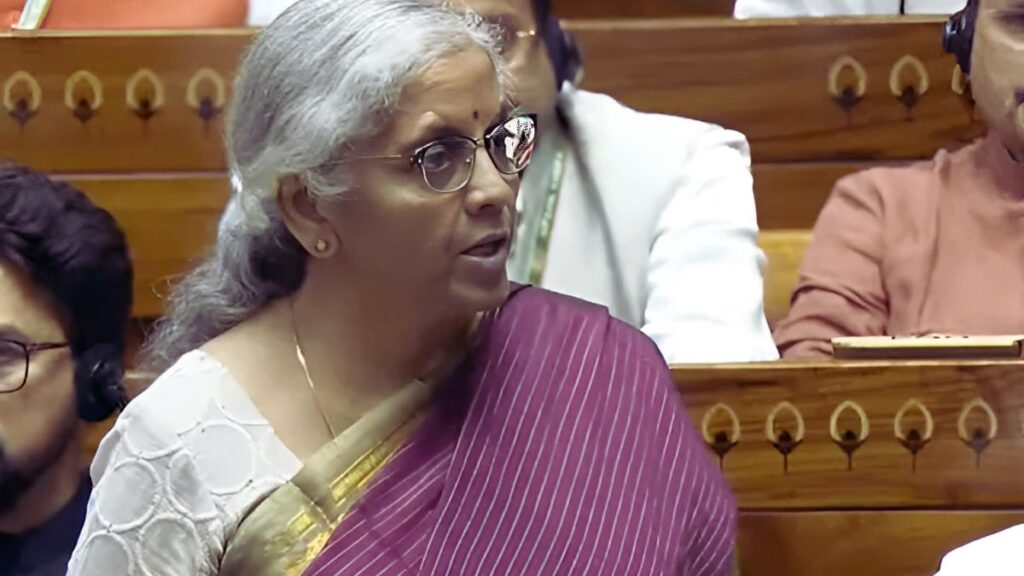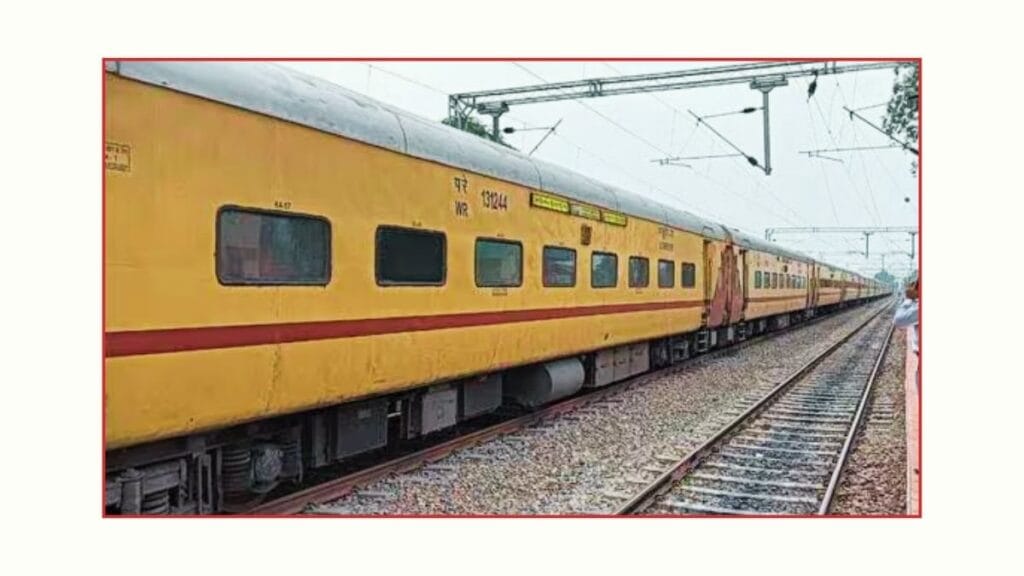Sitharaman Against Conflicting Claims, Defended Union Budget 2024
Finance Minister Nirmala Sitharaman on Tuesday firmly dismissed the opposition’s allegations of bias in the Union Budget 2024, presented in Parliament on July 23. Responding to a heated budget discussion in the Lok Sabha, Sitharaman asserted that no state, regardless of political affiliation, was denied funds. Her rebuttal was both comprehensive and pointed, shedding light on historical precedents and current fiscal realities.
The Union Budget 2024 has been a focal point of contention, with opposition leaders accusing the government of neglecting states ruled by non-NDA parties. Sitharaman, in her reply, categorically denied these allegations. She pointed out that previous budgets under the United Progressive Alliance (UPA) also did not specifically mention every state by name. Her reference to historical budget speeches underscored her argument that omission from the speech does not equate to exclusion from funding.
“I have been picking up on Budget speeches since 2004-2005, 2005-2006, 2006-2007, 2007-2008 and so on. The Budget of 2004-2005 did not take the name of 17 states. I would like to ask the members of the UPA government at that time – did money not go to those 17 states? Did they stop it?” Sitharaman stated, quoting data to support her claim.
Sitharaman meticulously listed instances from past budgets where numerous states were not mentioned, yet still received their due share of funds. For example, in the 2005-06 budget, 18 states were not named, while in 2006-07, 13 states were omitted. The pattern continued, with 16 states not mentioned in 2007-08 and 26 states left out in 2009-10. She challenged the opposition to reflect on these precedents before levying such accusations.
The opposition specifically targeted budgetary announcements for Bihar and Andhra Pradesh, states governed by key NDA allies Janata Dal (United) and Telugu Desam Party, respectively. Sitharaman highlighted that the allocation of funds was based on developmental needs and not political favoritism. She emphasized that the budget aimed to ensure equitable growth across all regions, addressing critical areas such as infrastructure, healthcare, and education.
In her address, Sitharaman cited a recent State Bank of India (SBI) research report that painted a positive picture of job creation under the current administration. According to the report, India created 12.5 crore jobs between 2014 and 2023, a significant increase compared to the 2.9 crore jobs generated during the UPA’s decade-long tenure. This statistic was a crucial point in countering claims of economic stagnation and joblessness.
“The unemployment rate has declined from 6% in 2017-18 to a low of 3.2% in 2022-23. Youth unemployment for the age group 15-29 years has declined sharply from 17.8% in 2017-18 to 10% in 2022-23,” Sitharaman noted, emphasizing the government’s focus on employment generation and economic stability.
Sitharaman also addressed concerns regarding the budget allocation for various social schemes. She pointed out that the current budget allocation for the agriculture and allied sectors had increased to ₹1.52 lakh crore, up from ₹30,000 crore in 2013-14. This allocation was ₹8,000 crore more than the previous year’s budget, reflecting the government’s commitment to supporting the agricultural sector and rural development.
Switching gears to respond to criticisms from Karnataka’s Chief Minister Siddaramaiah, Sitharaman highlighted the state’s economic challenges under the Congress government. She pointed out that Karnataka’s inflation rate, at 6.1%, was higher than the national average of 5.4% between June 2023 and June 2024. She attributed this to the state government’s policies, including hikes in fuel prices, milk prices, and stamp duties.
“The contribution of the state government is high inflation, much higher than the national average. And how I am saying that? Inflation between June 2023 and June 2024 the national average was 5.4 per cent. Karnataka is at 6.1 per cent,” Sitharaman stated. She contrasted this with the BJP’s tenure, during which Karnataka’s inflation rate was kept below the national average.

Sitharaman provided a detailed critique of Karnataka’s economic management. She cited increases in petrol and diesel prices by ₹3 and ₹3.5, respectively, as well as a ₹5 hike in milk prices. Additionally, property guidance values were increased by 25-30%, stamp duty charges saw a significant hike of 200-500%, vehicle registration fees were raised by 3%, and additional lifetime taxes on electric vehicles were imposed. These measures, she argued, contributed to the state’s high inflation and economic woes.
Looking ahead, Sitharaman reiterated the government’s commitment to balanced regional development. She outlined future plans for infrastructure development, social welfare programs, and economic reforms aimed at fostering inclusive growth. The budget provisions, she assured, were designed to ensure that all states, regardless of political affiliations, receive their fair share of resources.
Nirmala Sitharaman’s robust defense of the Union Budget 2024 was a clear indication of the government’s commitment to transparency and equitable distribution of resources. By addressing historical contexts, current economic indicators, and detailed budgetary provisions, she effectively countered the opposition’s claims. As India continues to navigate its economic challenges, the emphasis on job creation, social welfare, and regional development remains paramount.
What was the main contention of the opposition regarding the Union Budget 2024?
The opposition alleged that the Union Budget 2024 ignored states ruled by non-NDA parties and favored NDA-ruled states.
How did Nirmala Sitharaman respond to the allegations?
Sitharaman provided historical context, showing that past budgets also did not mention every state by name. She emphasized that all states received their due share of funds, regardless of their mention in the budget speech.
What did Sitharaman say about job creation under the current administration?
She cited an SBI research report stating that India created 12.5 crore jobs between 2014 and 2023, compared to 2.9 crore during the UPA’s tenure. She highlighted the decline in the unemployment rate from 6% in 2017-18 to 3.2% in 2022-23.
How did Sitharaman address concerns about budget allocations for social schemes?
She pointed out that the allocation for agriculture and allied sectors increased significantly in the current budget, reflecting the government’s commitment to supporting rural development and social welfare.
What critique did Sitharaman offer regarding Karnataka’s economic management?
She highlighted Karnataka’s higher inflation rate compared to the national average, attributing it to state government policies like hikes in fuel prices, milk prices, and stamp duties.
What are the government’s future plans for regional development?
Sitharaman outlined plans for infrastructure development, social welfare programs, and economic reforms aimed at ensuring balanced regional growth and equitable distribution of resources.
Stay connected with NH Punjab on social media. Follow us on Facebook, Twitter/X, and Instagram for the latest news updates, behind-the-scenes content, and more. Engage with us online and be a part of our growing community.
Sign up for our newsletter to get the latest news delivered straight to your inbox. Follow us on social media for real-time updates and engaging content.
Have questions or need more information? Feel free to reach out to us through our Contact Page. You can also learn more about our mission and team on our About Page.
For more details, visit our Privacy Policy, Disclaimer, and Terms and Conditions.
Stay connected with NH PUNJAB (Punjabi), where your news journey begins.


